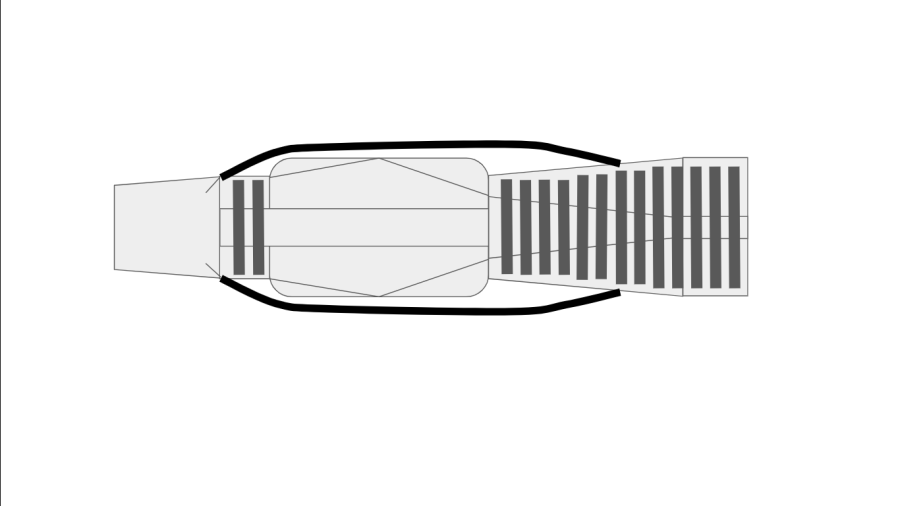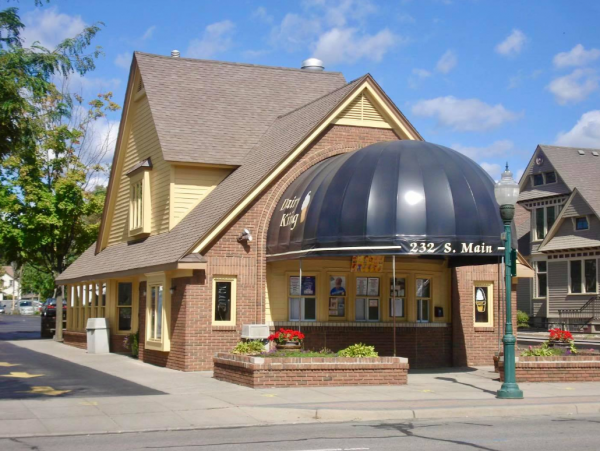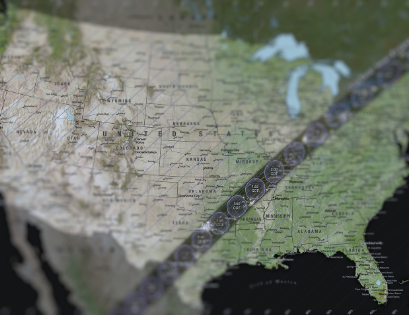Everything you need to know about jet engines
December 15, 2022
Write your article below:
I know at least a few of you have read my “everything you need to know about rocket engines”, and found it quite fascinating. If you enjoyed it, you’re in luck, because in this article I will be discussing another kind of combustion engine: jet engines. Jet engines are those big things on the wings of airplanes that look like a tube with a fan jammed into them. In reality, they are a lot more complicated that that. But, in this article, I’ll make it easier for you by oversimplifying things a bit, and only explaining their primary mechanisms.
First, we will discuss the jet engine that you have probably flown under the power of before, which is the turbofan engine. This engine has a huge fan on it in the front, but only about 10% of the air that it sucks in gets combusted. Most of the air is ejected out the back, and that is actually where most of the thrust comes from. The 10% of air that gets combusted spins a turbine, which is connected to the same shaft as the front fan, which makes it spin, which drags in more air, which makes better combustion. The air is compressed with a multi fan compressor stack, which passes the air through smaller and smaller openings until it mixes with the fuel, and gets ignited with a spark plug.
The next type of jet engine we should discuss is the turbojet engine. This is essentially the same as a turbofan engine, with the turbine and compressor and all that jazz, but instead of only blowing up 10% of the air, it uses it all. These engines use the gases from the combustion chamber to generate thrust, so these engines spit a lot more fire out of their exhaust. Since they use all their air and have stronger combustion, they are much louder and much less efficient, but they generate higher-velocity exhaust, which makes them more powerful. When they are used in fighter jets, they are often equipped with an afterburner to provide additional thrust. An afterburner is a device that generates more thrust by adding more combustion gases, usually by spraying in extra fuel and air.
The third type of engine I will tell you about is the turboprop engine. These babies are basically the same general concept as the turbofan engine, but instead of having a big fan inside a tube, you have a propeller instead. They are basically just better versions of the conventional prop engine, which was basically a car engine inside a plane. They are better engines than car engines because they are more powerful, can work higher up in the atmosphere, and the fuel they use is easier to find than aviation fuel.
The next kind of engine we need to discuss is the ramjet. This thing works on the fact that speed higher than Mach 1 produces shock waves, which is a very thin sheet of extremely high-pressure air. They have a large front spike, on which the shockwave is formed, and the shape of the spike is just perfect so that it will allow that shockwave to go into the intake cowling, and that hypercompressed air will fuel combustion, and generate a lot of hot gases. Then, the combustion gases will be fired out the back using a de laval nozzle, which i discussed in more depth in my rocket engine article, which you should go check out once you finish this one. They will accelerate the gases to above the speed of sound, and make any ramjet-powered craft very fast.
The next type of engine I will talk about is the scramjet engine, which is the theoretical highest power jet engine possible. Like ramjets, these engines use their own velocity to feed themselves, but instead of using shockwaves, they use a throat in the intake that chokes the flow and makes it even more pressurized air. They also need to be going fast to work, but their minimum operating speed is much higher than that of ramjets, at an insane speed of mach 4.5. They use friction and pressure to heat up air. All they need to do now is add some fuel, and boom, there is a jet engine that will power you all the way up to Mach 10!
We will finish off the list with a real oddball, which is the pulsejet engine. This engine is different from the others in a lot of ways. For starters, instead of using compressor stacks or it’s own velocity to drag in air, these use suction. It will be easier for me to explain the suction effect that these babies use if I explain their other odd trait first, and it’s in their name: pulse. These engines used pulsed combustion instead of continuous combustion to make thrust, so basically, they are just making a bunch of explosions in their combustion chambers, one after the other. These explosions send a large wave of gases out the nozzle, and those will create a vacuum with nothing in it, which drags in a lot of air, to fuel the next blast, and so on. These engines are ridiculously simple, and there are about a million YouTube tutorials on how to make one yourself. These engines do have some issues though, mainly their crappy gas mileage, their relativley poor thrust, and their insanely loud noise. Pulsejet engines are in 2 main groups, valved, which use flap valves to let air in, but not combustion gases out. Valveless pulsejets use weird geometries to direct the thrust, and often have a big bend in the middle that makes them look like horseshoes. I even built one myself, and it still works to this day.
When all is said and done, jet engines are pretty interesting machines. I hope you enjoyed reading this article as much as I enjoyed making it, and have an awesome rest of your day!










a.w • Dec 19, 2022 at 9:00 am
this is great! pls make more -o-
North korea • Dec 16, 2022 at 1:12 pm
Thanks, Mr. Ben Garcia Mc. Kinley. You will be spared in our conquest of the Japanese sea, and eventually, the world.